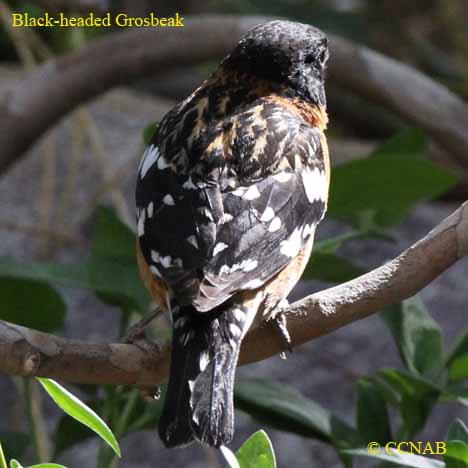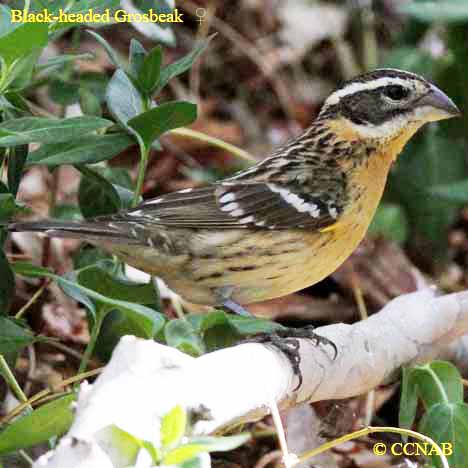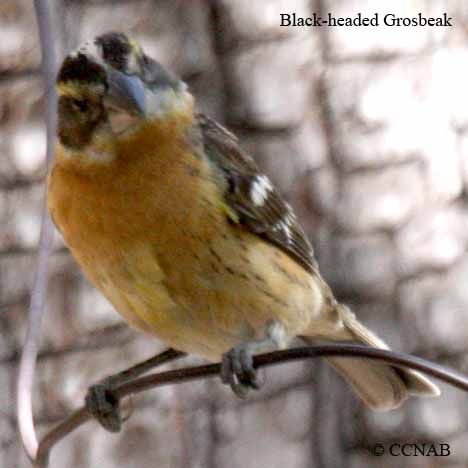North American Bird Search Box
This search box can be used to find bird species using bird's english, french or latin name, or to identify bird by its 4 letter Alpha Code
Field Guide for all the Birds of North America
Black-headed Grosbeak
4 Letter (english names) Alpha Code: BHGR (1)
Cardinal à tête noire
Pheucticus melanocephalus
Information, images and range maps on over 1,000 birds of North America, including sub-species, vagrants, introduced birds and possibilities
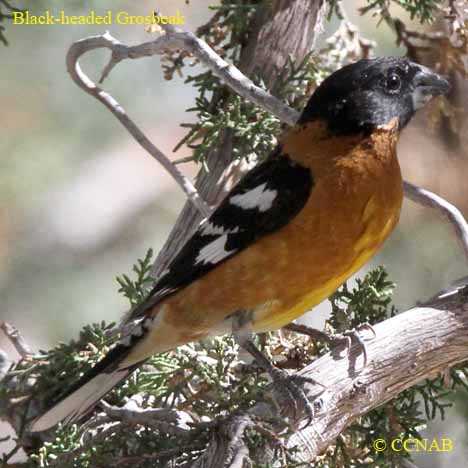
Species: The Black-headed Grosbeak (Pheucticus melanocephalus), is an attractive large billed forest dwelling bird, similar in appearance to the Rose-breasted Grosbeak. They sometimes hybridize with each other in the central regions of the continent, where both species overlap. Found in the western regions of Canada and into the western and west central regions of the USA, right into Mexico. This grosbeak is a regular visitor to bird feeders and prefers a variation of seeds and fruit.
Distinctions: Sexually dimorphic, whereas, the male in breeding plumage is seen with a black head, back, tail and wings, brownish-orange around nape, breast and flanks. The female is more so seen in a lighter brown plumage with an orange tone. Both sexes have white wing bars, seen with yellow underwing linings when flying.
Voice: Loud flute-like warbling lyrics, usually singing from high up in the crown of the tree tops.
Nesting: Three to four greenish eggs, with brown spots. Builds its nest in deciduous forest and forest edges. The Black-headed Grosbeak has one brood per year.
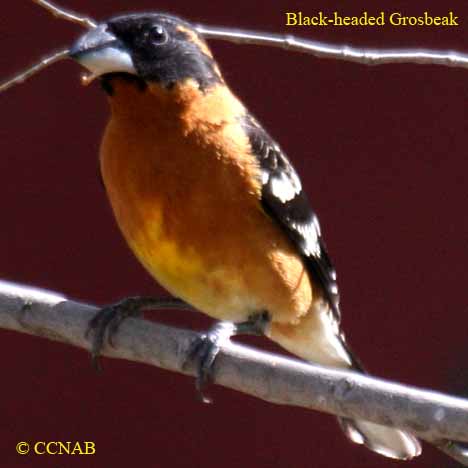
Life, Habitat & Pictures of North American Grosbeaks
| B L | W W | W | Family | Latin Name |
|---|---|---|---|---|
| 8.25" 21cm | 12.5" 31.7cm | 1.6 oz 45.3g | Cardinalidae | Pheucticus melanocephalus |
North American Bird Calls
- Click here
- Click here
- Summer
- Year Around
- Winter
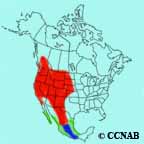
Distribution: Seen in the breeding season, from northern British Columbia and along the southern Canadian borders to Saskatchewan, down through the central USA states into Mexico, west to California and back up north into Canada along the western coastlines.
Reference to Other Bird Site:
ABA - American Birding Association This site represents an organization that maintains official records of all birds species that have been proven to have been seen inside the perimeters of the North American Continent and the surrounding bodies of water. Regular revised versions are posted to keep the bird list current at all times. This is the list used by all serious birders over their lifetime. You may be aware of the movie called the "Big Year". It was with this list that all the competing birders used in an attempt to set a new record as to how many bird species that could be seen by an individual birder in one calendar year.
